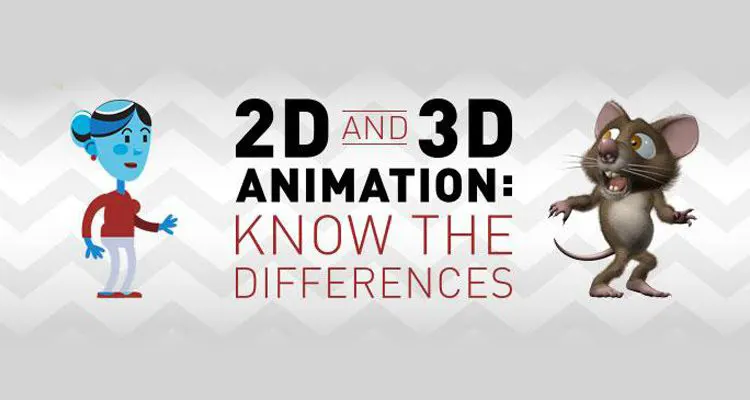
2D animation and 3D animation are two distinct forms of visual storytelling with their own set of characteristics, advantages, and limitations. Each has its own unique appeal and is suited to different purposes and preferences.
1. Visual Style and Aesthetics:
2D Animation:
- Traditional and classic feel.
- Flat and hand-drawn appearance.
- Artistic expression is often emphasized.
- Well-suited for conveying emotional depth through character design and expression.
3D Animation:
- Realistic and immersive visuals.
- Depth and dimensionality due to computer-generated graphics.
- Often used for creating lifelike environments and characters.
- Provides a modern and cutting-edge aesthetic.
2. Production Process:
2D Animation:
- Typically involves frame-by-frame drawing or the use of 2D rigging.
- Requires skilled artists and animators.
- Can be more time-consuming, especially for complex scenes.
3D Animation:
- Involves creating 3D models, rigging, and animating within a digital environment.
- More technical and requires expertise in 3D software.
- Offers efficiency for certain types of animations due to the use of digital tools.
3. Flexibility and Fluidity:
2D Animation:
- Fluid and expressive character movements.
- Can convey a wide range of emotions effectively.
- Well-suited for stylized and exaggerated movements.
3D Animation:
- Realistic and precise movements.
- Requires careful attention to details like physics and weight.
- Better for depicting complex actions and realistic simulations.
4. Cost and Resources:
2D Animation:
- Can be more cost-effective, especially for simpler projects.
- Requires skilled artists but often involves a smaller team compared to 3D animation.
- Suitable for smaller budgets and indie productions.
3D Animation:
- Initial costs can be higher due to the need for specialized software and skilled 3D animators.
- Larger teams are often required, including modelers, riggers, animators, etc.
- Commonly used in big-budget films and high-end productions.
5. Application and Industry Trends:
2D Animation:
- Traditional hand-drawn animation is a classic form used in cartoons, illustrations, and some feature films.
- Still popular in certain artistic and indie circles.
3D Animation:
- Dominant in the film and gaming industries for creating realistic and immersive experiences.
- Continues to evolve with advancements in technology, including virtual reality and augmented reality.
The choice between 2D and 3D animation depends on the project's requirements, artistic goals, and budget constraints. While 2D animation provides a timeless and artistic feel, 3D animation offers a more modern and versatile approach with realistic visuals. Both have their merits, and the decision ultimately rests on the specific needs and creative vision of the project at hand.




0 Comments